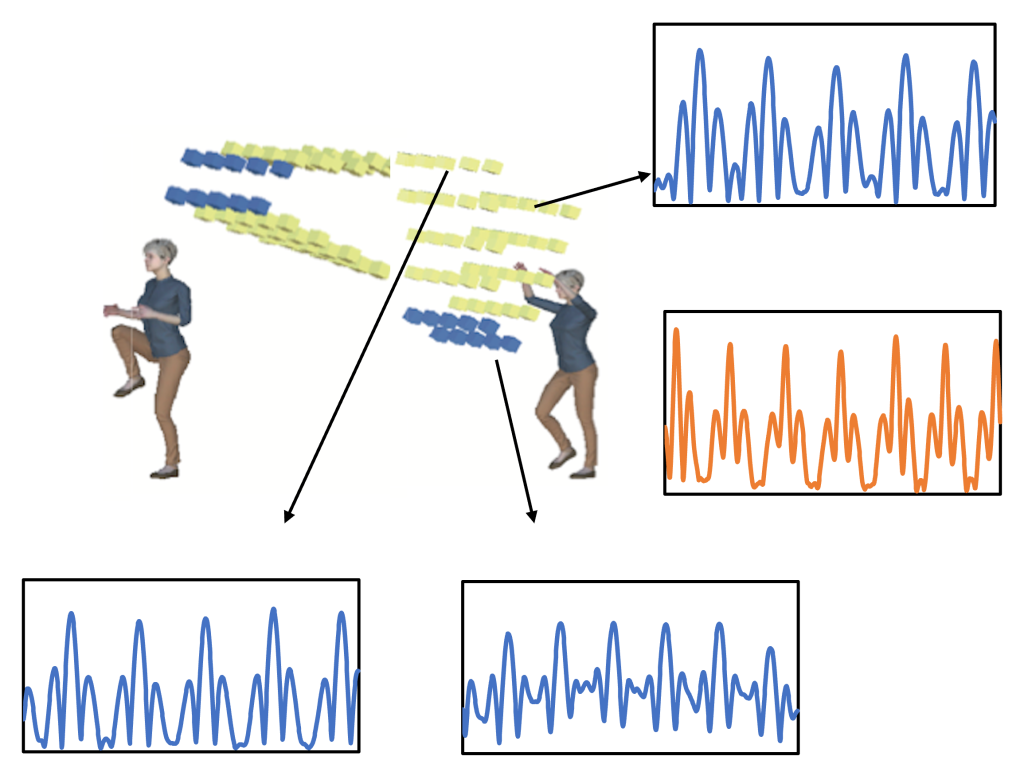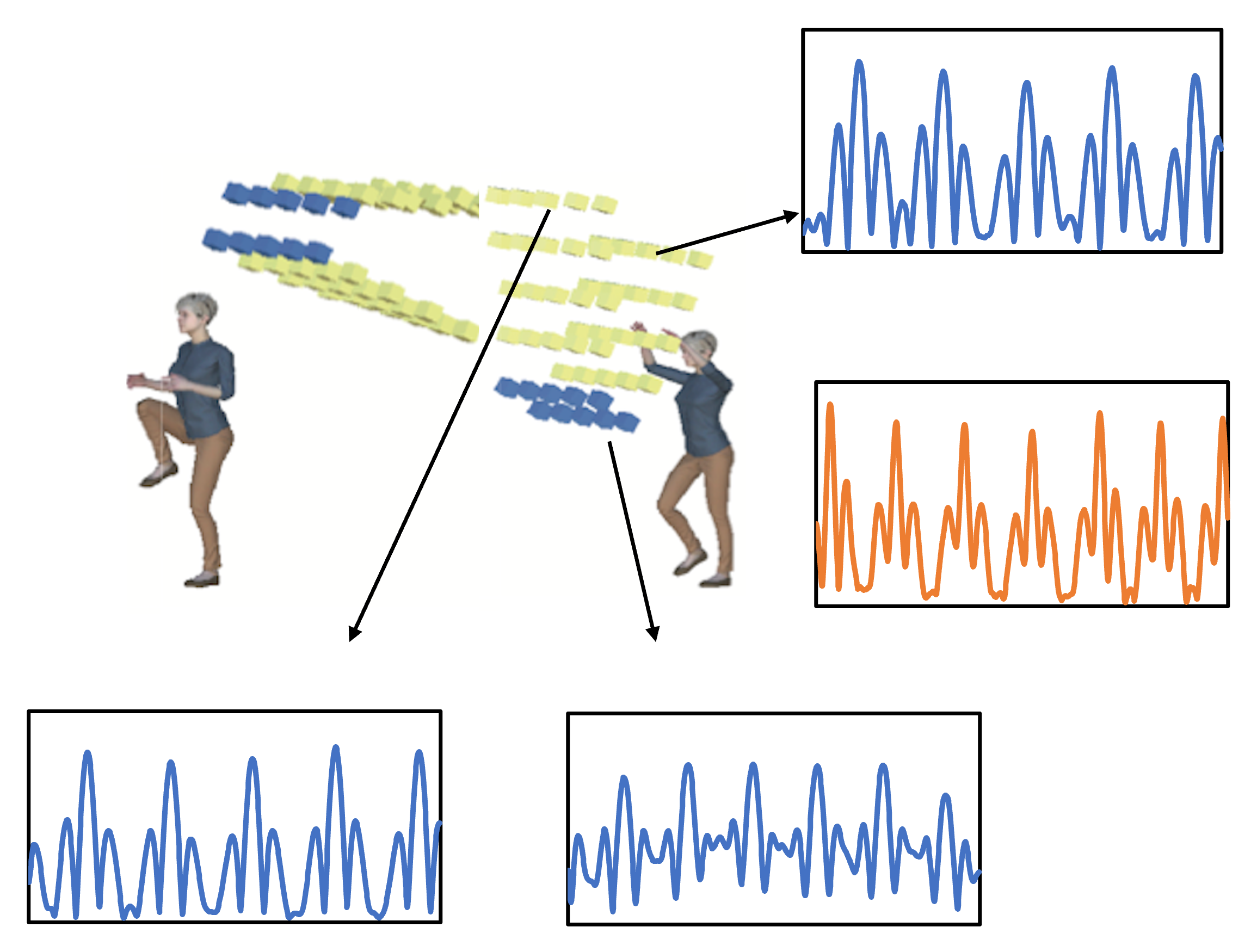運動認識のためのばね関節モデルによるバーチャルIMU データ拡張
Virtual IMU Data Augmentation by Spring-joint Model for Motion Exercises Recognition without Using Real Data
2022
Chengshuo Xia, Yuta Sugiura
[Reference /引用はこちら]
Chengshuo Xia, Yuta Sugiura, Virtual IMU Data Augmentation by Spring-joint Model for Motion Exercises Recognition without Using Real Data. The 2022 International Symposium on Wearable Computers (ISWC ’22), ACM. [DOI][Presentation Video]
従来の運動認識システムは、フィットネス/エクササイズにおいて、あらかじめ決められた身体運動をトラッキングするのみだった。そのため、ユーザーは任意の身体運動をシステムに認識させられず、運動認識システムの役割も限定的であった。バーチャルIMUデータは、トレーニングデータセットのコストを削減し、オンラインリソースを使用して柔軟なシステム設計を可能にする。そこで本論文は、2Dビデオから取得した仮想の加速度信号を補強するために、Sprint Jointモデルを用いたバーチャルIMUセンサモジュールを提案する。生の仮想加速度信号をSprint Jointモデルにより生成された加速度の分布データを用いて拡張し、これを運動認識器をロバストにするために使用した。提案手法は3つの動作を認識する分類器を作ることができ、7名の動作データに対して平均85.5%の精度を示した。
A conventional motion exercises recognition system only tracked designated motion types in the end user’s fitness. It enables users cannot to enjoy a customized system according to personal needs and limits the role of intelligent exercise recognition systems on users. The virtual IMU data provides a new opportunity to reduce the cost of training datasets and flexibly design the activity recognition system using online resources. To better design a user-customized motion exercises recognition system, this paper proposes a virtual IMU sensor module with a spring-joint model to augment the virtual acceleration signal from the limited online 2D video. The original virtual acceleration signal is extended with data from different acceleration distributions generated by the spring-joint model and used to train a motion exercises recognizer to improve the robustness. The proposed method can design a classifier for three motion recognition with limited video resources, showing an average accuracy of 85.5% on the motion data of seven individuals.

